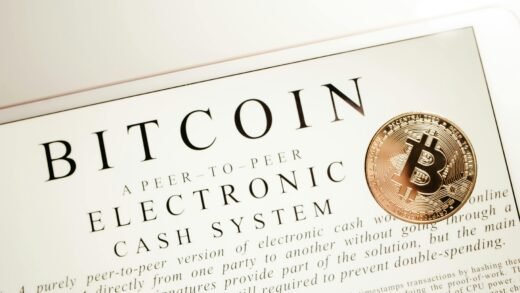ARE DEFI LENDING PLATFORMS THE FUTURE OF FINANCE?
Introduction:
Over the past few years, a new technology has made waves and caused massive changes in terms of how things are done within the traditional banking sector — this being decentralized finance (DeFi). Using technology, assets can also be locked in a smart contract and released when certain conditions are met — DeFi ushered this movement by offering alternative financial services to users using the blockchain, cutting traditional banking intermediaries. LendingOne of the most well-liked use cases in DeFi applications is lending. DeFi lending platforms are centered around allowing users to lend or borrow digital assets, receive interest payments on said loans, and facilitate borrowing with fewer intermediaries in a permissionless (decentralised), trust-less way. In this article, we will analyze how DeFi lending platforms work and the pros/cons of using them.

TRADING
DeFi Lending Platforms explained
DeFi lending platforms are decentralized applications (dApps) that allow users to lend out cryptocurrency and borrow without middlemen. These platforms are based on blockchain networks, usually Ethereum and run the help of Smart contracts — self-executing contract where the terms written directly into lines.
With traditional lending, a borrower requires to contact with financial institution such as bank where they have to provide hard copies of documents and files related their credit check account which goes through lengthy process before being qualified. DeFi lending platforms, on the other hand, execute this process with automation. Borrowers can obtain loans by collateralizing digital assets and lenders earn interest providing liquidity to the platform.
Implementation Of DeFi Lending Platforms
Lending
In most cases, users who own cryptocurrency can deposit their assets into a DeFi lending platform and essentially become lenders. These deposits are then pooled and lent out to borrowers. As a result, lenders earn intrest on the funds they deposited (paid by borrowers). DeFi platforms generally operate on interest rates determined by the usual supply and demand. When there is strong demand to lend money, interest rates go up; and when the opposite happens they tend to fall.
Borrowing
To lend money from a DeFi platform they have to stake the equivalent value in another cryptocurrency. }; In practical terms a borrower could collateralise their Ethereum (ETH) and then borrow stablecoins such as DAI or USDC A user borrows the funds in proportion to collateral provided where typically all platforms have a low collateralization ratio — i.e. loan value is less than the amount of money deposited as security (collateral). This ensures a smooth sailing platform
Smart Contracts
The lending and borrowing process is entirely governed by smart contracts, executing a transparent, secure, and trustless transaction. When a borrower gives collateral, it is locked by the smart contract and he receives the loan. In the case of a loan, if the borrower never pays back what he owes to whoever lent that original money (or credit), then anyway — at some point in time — when it comes due for repayment: alternative to physical repossession or court orders; this smart contract can instead automatically liquidate any collateral and step aside, re-allocating current ownership & control over said real-world asset(s) from its old owner operator responsible via more moldable legal terms 『the lender』.
Interest Rates and Yield
One of the main attractions of DeFi lending platforms is that you could earn more interest versus conventional savings accounts. When you hold cryptocurrency in the platform, others can borrow your crypto and pay interest to do so — essentially having them when they are not using it. On the other side of that trade borrowers pay for their loans with interest on top of paying back what was borrowed at a later date (if provided/actual). The rates of interest are set as per market conditions, asset supplies and borrowing demands.
DeFi Lending Platforms: Features
Permissionless Access
Access anything with an internet connection is one of the defining features of DeFi lending platforms. Auto Approval — No credit checks, no KYC (know your customer) requirements and permissionless. The permissionless aspect of DeFi lending enables users across the globe to access these services, especially for those in regions where finance and banking are scarce or non-existent.
Transparency and Security
Decentralized finance (Defi) applications are built on the blockchain, and as such all activity is recorded on a publicly viewable ledger. This transparency allows users to verify the integrity of the system and even track their assets in real time. Smart contracts, furthermore, guide the entire lending and borrowing process thus removing any possibility of fault by man or foul. Users have to trust the security of smart contract code and any vulnerability in them could be exploited by nefarious actors.
Lending Platforms in DeFi place
Aave
Aave — Aave is an open source, decentralized non-custodial liquidity protocol on Ethereum lending assets to earn interest via the money market.& YFI? Innovations such as Aave’s flash loans, where farmers are able to take out a loan without providing collateral so long as the user can return liquidity back in that same transaction. It also has both variable and stable interest rate options, which makes borrowing more flexible.
Compound
Another well-known DeFi platform is Compound, which lets users lend and borrow out various cryptocurrencies. When depositors (referred to as lenders), provide their assets. They automatically earn interest and borrowers have access credit by providing collateral.
MakerDAO
The protocol for the decentralized stablecoin Dai by MakerDAO The maker vault allows users to deposit ETH and supported assets in the Maker DAO contract. Which then generates DAI loans aggregated through communities called Boards. Maker DAO is actually overcollateralized to ensure the stability of its system, because Dai generation depends on more collateral than it would lend out.
Risk and Challenges in DeFi Lending
Smart Contract Risks
Smart contracts: Smart contract aims to standardize the functioning. It is safe but not unbreakable because bugs and vulnerabilities might exist If a smart contract is attacked, well funds can be stolen. Therefore it is important for user to research well and only use reputed secure platforms.
Collateralization Risks
Most DeFi loans are overcollateralized — consider the borrower puts up more collateral than what they want to borrow. Liquidation Basically. If your collateral falls too far below its required value you run the risk of getting liquidated. Meaning there even might be sell orders flooding in as we speak to get rid off enough long positions.
Conclusion
DeFi Payments are changing the financial landscape in ways that will disrupt multiple providers. These platforms provide users with a decentralized, transparent and permissionless alternative to conventional banking. Stimulating exciting new use cases around lending, borrowing or earning interest by simply holding onto their cryptocurrency assets. Nevertheless, users must realize that the DeFi ecosystem carries certain risks. They also need to do their research so they can determine. How much exposure is appropriate for them.


